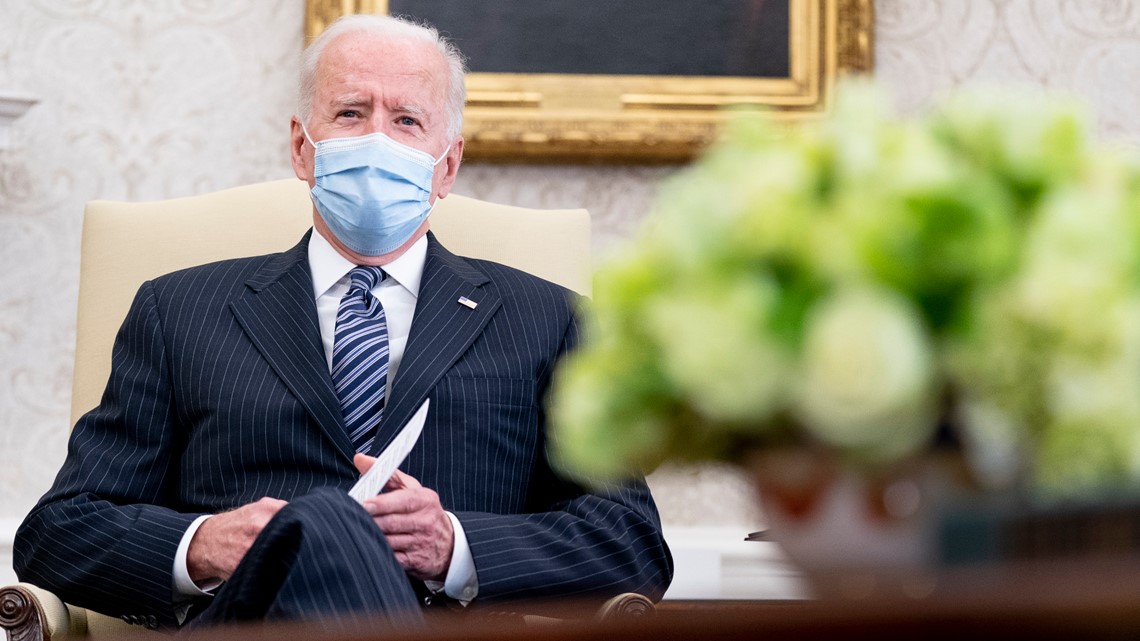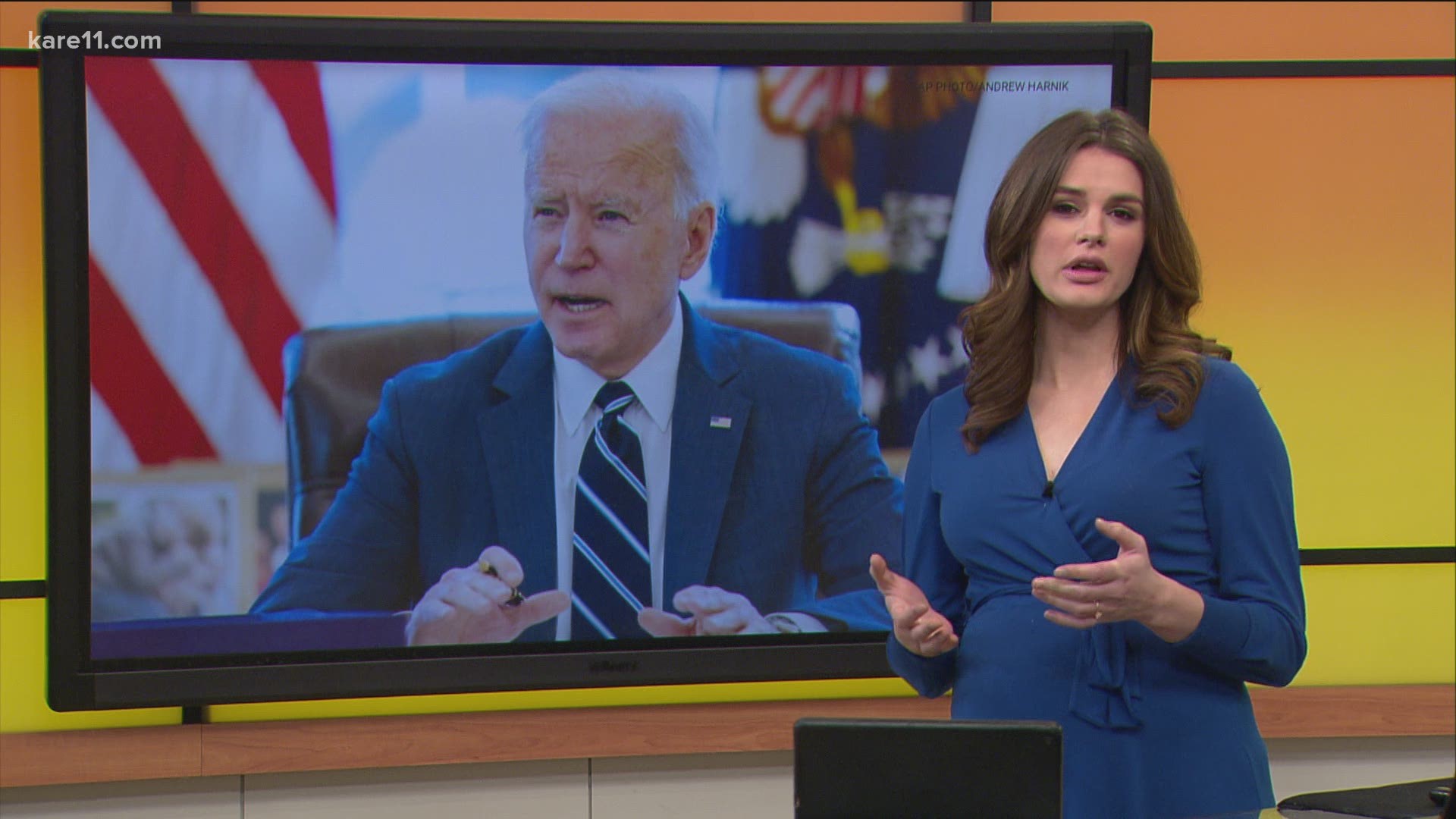WASHINGTON — Marking his first 100 days in office, President Joe Biden will use his first joint address to Congress to pitch a $1.8 trillion investment in children, families and education that would fundamentally transform the role government plays in American life.
Biden will make his case Wednesday night before a pared-down gathering of mask-wearing legislators due to coronavirus restrictions and in a U.S. Capitol still surrounded by fencing after insurrectionists protesting his election stormed to the doors of the House chamber where he will speak.
In the nationally televised ritual of a president standing before Congress, Biden will lay out a sweeping proposal for universal preschool, two years of free community college, $225 billion for child care and monthly payments of at least $250 to parents. His ideas target frailties that were uncovered by the pandemic, and he will make the case that economic growth would best come from taxing the rich to help the middle class and the poor.
For Biden, whose moment has been nearly a half century in the making, his speech will also provide an update on progress in combating the COVID-19 crisis he was elected to tame, showcasing hundreds of millions of vaccinations and relief checks delivered to help offset the devastation wrought by a virus that has killed more than 573,000 people in the United States. He will also champion his $2.3 trillion infrastructure plan, a staggering figure to be financed by higher taxes on corporations.
Seizing an opportunity born of calamity, Biden has embraced momentous action over incremental progress. But he will be forced to thread the needle between Republicans who cry government overreach and some Democrats who fear he won’t go big enough.
The Democratic president's strategy is to sidestep the polarization and make his appeal directly to voters. His prime-time speech will underscore a trio of central campaign promises: to manage the deadly pandemic, to turn down the tension in Washington and to restore faith in government as an effective force for good.
"He is a big-government Democrat, and he has not been at all reluctant to propose big initiatives in a response to a national crisis," said Julian Zelizer, a Princeton University presidential historian.
No American politician has more familiarity with the presidential address to Congress than Biden. He spent three decades in the audience as a senator and eight years as vice president seated behind President Barack Obama during the annual address.
But this year's scene at the front of the House chamber will have a historic look: For the first time, a female vice president, Kamala Harris, will be seated behind the chief executive for the speech. And she will be seated next to another woman, House Speaker Nancy Pelosi.
Biden knows that most of those seated before him have, as he did, looked at the president and envisioned themselves one day in his place. He has heard the memorable phrases and the long list of promises — often unmet — and seen the partisan reactions intensify as the years have hurried by.
He chose to delay this speech, typically given in the afterglow of a presidential inaugural. In doing so, he gave himself the chance to not simply speak of the pain of the COVID-19 crisis but also to talk about tangible progress.
The setting will be unlike for any of his predecessors, with members of Congress spread out and many Republicans citing “scheduling conflicts” to stay away. Senate Republican leader Mitch McConnell said Tuesday that Biden's presidency “can best be described as the Biden bait and switch.”


“President Biden ran as a moderate, but I’m hard pressed to think of anything at all that he’s done so far that would indicate some degree of moderation," McConnell said.
Yet the desire for swift action is born from political necessity. Biden understands that the time for passing his agenda could be perilously short given that presidents' parties historically lose congressional seats in the midterm elections, less than two years away. The Democrats’ margins are already razor-thin.
Biden will talk to Congress amid the start of a potentially booming recovery, one that could determine whether the U.S. economy can again fire on all cylinders after a morale-crushing pandemic with economic shock waves that could linger for years.
He will speak against a backdrop of the weakening but still lethal pandemic, staggering unemployment and a roiling debate about police violence against Blacks. Biden will also use his address to touch on the broader national reckoning over race in America, and to call on Congress to act on prescription drug pricing, gun control and modernizing the nation’s immigration system.
The president, who has been working on the speech for weeks, was expected to rehearse it repeatedly on Wednesday, including a full run-through at the White House before the short, ceremonial drive up Pennsylvania Avenue to the Capitol.
In his first three months in office, Biden signed a $1.9 trillion COVID-19 relief bill — passed without a single GOP vote — and has shepherded direct payments of $1,400 per person to more than 160 million households. Hundreds of billions of dollars in aid will soon arrive for state and local governments, enough money that overall U.S. growth this year could eclipse 6% — a level not seen since 1984. Administration officials are betting that it will be enough to bring back all 8.4 million jobs lost to the pandemic by next year.
Biden's speech is about how to sustain those gains once the debt-financed boost fades. Federal Reserve estimates suggest that the economy will slip to more modest 1.8% growth after at least two years of robust gains, potentially leaving the Biden era with some happy memories but few enduring legacies.
New in his Wednesday speech is a “families” plan that could cement his legacy with $1.8 trillion worth of spending over 10 years.
A significant amount would ensure that eligible families receive at least $250 monthly per child through 2025, extending the enhanced tax credit that was part of Biden’s COVID-19 aid. There would be $200 billion for free preschool for all 3- and 4-year-olds. Another $225 billion would pay for subsidized child care and invest in child care workers.
A national paid family and medical leave program would be started at a cost of $225 billion. Another $200 billion would go to permanently reduce health insurance premiums for people who receive coverage through the Affordable Care Act.
For $109 billion in federal money, people could attend community college tuition-free for two years. There would be $85 billion for Pell Grants to help more people afford higher education. Historically Black and tribal institutions would be eligible to receive $46 billion.
Funding all of this would be a series of tax increases on the wealthy that would raise about $1.5 trillion over a decade.
Biden wants to boost IRS enforcement and require disclosures by financial institutions, specifically targeting the rich. The White House estimates that would bring in $700 billion over 10 years. He would raise the top tax rate on the most affluent families from 37% to 39.6%. People earning in excess of $1 million a year would see their rate on capital gains — the profits from a sale of a stock or home — nearly double from 20% to 39.6%, which would mean the wealthiest Americans could no longer pay at a lower rate than many families who identify as middle class.
Republican lawmakers in Congress so far have balked at the price tag of both the “families” plan and infrastructure package, complicating the chances of passage in a deeply divided Washington.
The president has drawn a firm line that no household earning less than $400,000 a year will pay more in taxes, a line that would both broaden the definition of the middle class and clearly delineate just how extreme inequality has become.

